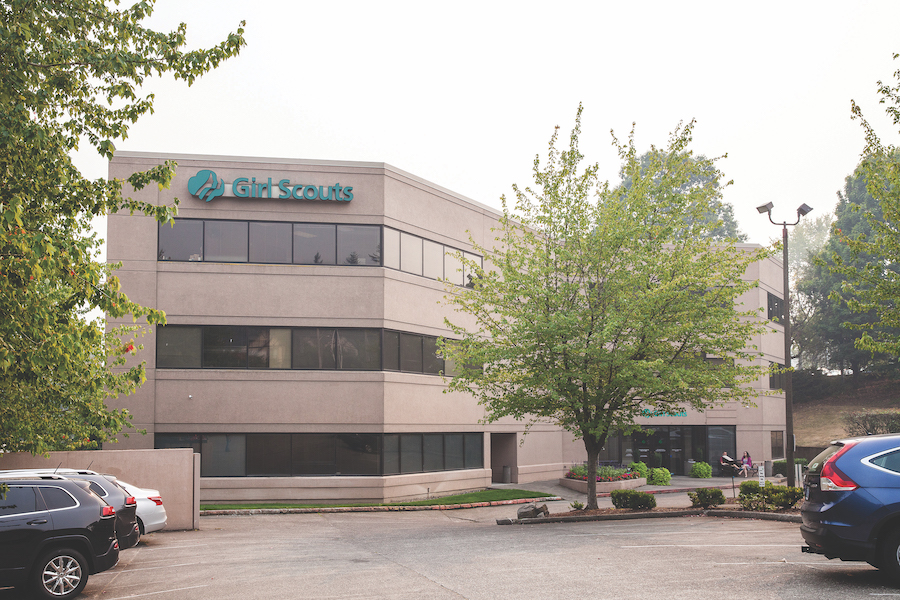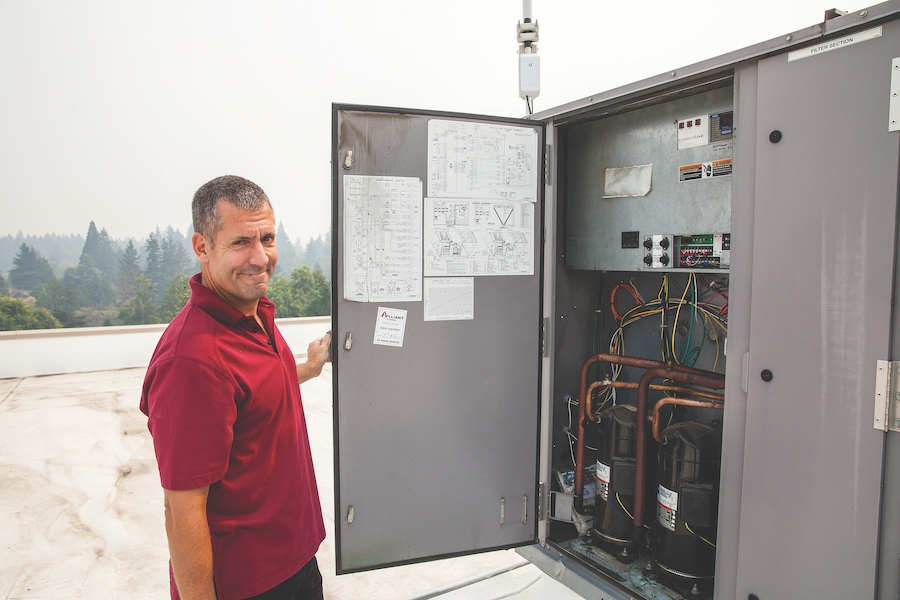Share this article! Girl Scouts of Oregon and Southwest Washington faced excessive utility bills to heat and cool their 80s-era Portland office building, yet discomfort reigned: decades-old technology couldn’t modify the temperature according to individual building zones. With solar exposure warming up east offices in the mornings and west offices in the afternoons, the dated … Read more
Girl Scouts of Oregon and Southwest Washington faced excessive utility bills to heat and cool their 80s-era Portland office building, yet discomfort reigned: decades-old technology couldn’t modify the temperature according to individual building zones. With solar exposure warming up east offices in the mornings and west offices in the afternoons, the dated HVAC system had only one way to respond: distribute cold air throughout the entire floor.
“Everyone recognized that there were significant issues with the systems,” says Scott Grice, GSOSW Director of Properties. “Issues that not only affected comfort but affected dollars: it cost extra money to run the system the way it was.”
To find a solution GSOSW turned to MacDonald-Miller Facility Solutions, a Northwest design-build mechanical contractor. The company went to work identifying an economical HVAC solution utilizing their existing hardware, and helped bring Energy Trust of Oregon on board to pay for more than half of the project.
Constructed in 1987, GSOW’s building had new rooftop units (RTUs) installed in 2007 prior to the purchase by GSOSW, but they were still governed by a 1980s-era control system, “which didn’t work well, and you couldn’t get replacement parts,” says Mike Johnson, MacDonald-Miller Business Development Executive.
 GSOSW energy upgraded Portland office.
GSOSW energy upgraded Portland office.
MacDonald-Miller Facility Solutions performed a site survey of the 30,000 square foot, three-story building on SW Barbur Boulevard. The winning remedy: a retrofit solution called Catalyst.
Catalyst enables the HVAC fan speed and damper action to moderate based on local temperatures, distributing conditioned air only to those building zones which require it. Johnson helped seal the deal by introducing GSOSW to the Energy Trust of Oregon, which is dedicated to conserving energy, supporting renewable energy, and helping ratepayers save on energy costs.
“MacDonald-Miller spearheaded the application, “ says Grice. “With the money we could save on utilities, it made a big splash at Energy Trust. They got on board to a point where we could install Catalyst.”
Installation took place in late spring 2017. It was quick and non-invasive, simply wiring into the existing circuit board of the RTUs. With an Energy Trust incentive paying for more than half of the project, and projected annual savings of approximately $14,000 per year, the system is due to pay for itself after only 30 months.
“Girl Scouts are all about using resources wisely and making the world a better place,” says Director of Communications Sarah Miller. “Using our energy more efficiently is definitely in line with our values as an organization. Plus, we’ll have more resources to devote to programming for girls. Helping them explore how to lead, STEM (science, technology, engineering and math), life skills and the outdoors is why we’re here. So while it may seem like a simple HVAC project doesn’t have a lot to do with our mission, it actually really contributes in the long term.”
Brand stories are paid content articles that allow Oregon Business advertisers to share news about their organizations and engage with readers on business and public policy issues. The stories are produced in house by the Oregon Business marketing department. For more information, contact associate publisher Courtney Kutzman.




